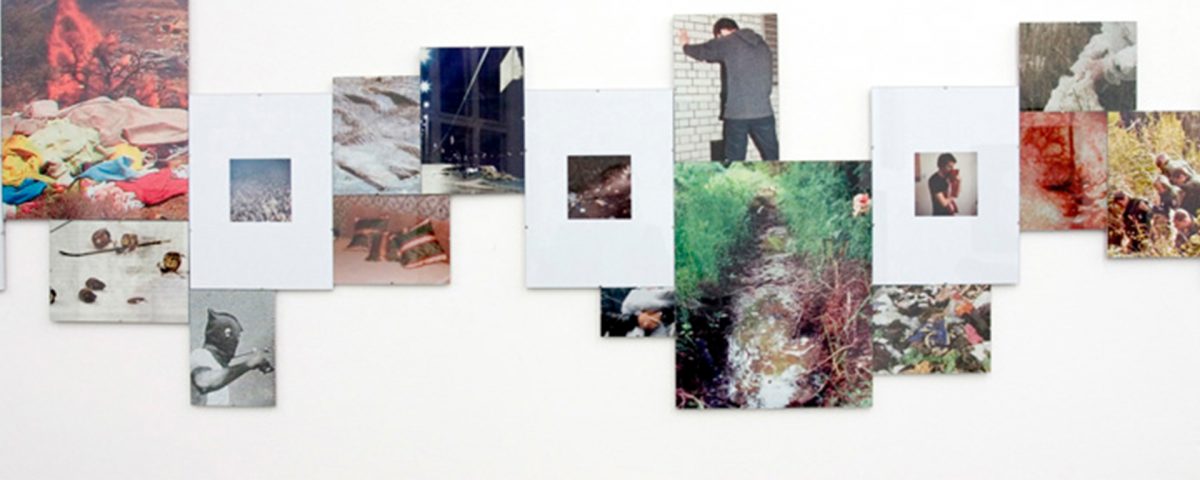
SASCHA WEIDNER
04/09/–14/10/2009
STAYING IS NOWHERE
There are many different ways of approaching a picture, a work of art: the iconographic analysis, the arthistorical perspective, the reflection of content, the realistic comparison, the empathetic understanding.
One approach to Weidner’s work is provided by the title of his photographic series, taken from the Duino Elegies by Rainer Maria Rilke. This citation refers to the most elemental driving forces of human existence, to the polarities of life, to the attraction of terrible and beautiful events that remain etched in our memory forever.
Our lives are determined by dichotomies: childhood and old age, beauty and horror, fear and joy, life and death, passion and boredom, perfection, flaws and abnormality. These extremes dominate our being and have always accompanied humanity. Between these poles, between the abysmal and the hopeful, men and women try to make their way in the world. Weidner’s photographs, like Rilke’s collection of elegies completed in 1923, revolve around an existential search; photographs and text use images to give meaning to our state of being, given our unavoidable decay, in equal measure.
Life goes on. The neo-romantic Weidner transfigures experience and attempts to find an individual beauty in cruelties suffered, and to present it as a gift. Existing photographic materials, largely taken from the mass media, generated by television and the Internet, are his point of departure, but he also uses images borrowed from the history of art. He places his own photographs alongside these pictorial citations; the former making reference to the found public material, commenting on it, and facilitating new individual ways of reading and interpreting it. Does Weidner therefore not create a tense balance between the official images canonised by the media, and his personal images, his own photographs, presenting perceptions from his own biographical history?
This series was initiated by the collective experience of the pictorial analysis of the catastrophe of September 11th. The omnipresence of the same media images on all television channels, at times with music, had the effect, that the photographs of this terrible disaster, despite their great import, suddenly appeared so enticing that it was barely possible to look away from them. Over and over again, in front of the entire world, the twin towers of the World Trade Center collapsed. Over and over, bizarre piles of ruins emerged from the smoke, evoking a shape and atmosphere of fascination.
In the book, these and the other media images in Weidner’s series are portrayed as cropped photographs, which however fill the entire page: here, the artist has blown up the images to such extremes that the images are disorientated. The abstract dots of the printed photographs become a structural element. The familiarity of a concrete event, portrayed in an image, disappears and is replaced by medial and emotional identification with events that lie between states of perception and subjective sensation. Dense visual situations emerge that refer to a similar lexical pictorial structure or to a similar energy. The viewer is reminded of a quite specific image and the corresponding situation: Weidner places his pictorial answers in opposition to the destroyed World Trade Center, to the deserted piles of washing in a refugee camp in Macedonia, to the Challenger catastrophe and to a forest fire, all in contact print size: 6 cm × 6 cm. Here, the ruins of a demolished building in Braunschweig are given the title Ice Sea II, a reference to Caspar David Friedrich’s Ice Sea; we see clothes left behind on a bed by two friends during a visit to Paris, a car crash observed by chance.
His photographs in no way reproduce their predecessors; instead their divergence is disconcerting. For example, the photograph of apparently completely functional car on a roof initially appears to be pure performance: there is no debris, no blood on the asphalt to indicate an accident. However, this chance situation is indeed authentic; paradoxically, this event really did take place. With his feeling for curious and surreal scenarios, Weidner creates interrelations and links between heterogeneous experiences and impressions, which he portrays as if he had experienced them himself, either manipulated or partly orchestrated. He makes use of reality, its collisions and crashes, in an undisguised and, in this respect, truthful representation; but then goes a step further by exaggerating and questioning. »In the final analysis, what I am probably most afraid of is reality«, announced the American photographer Gregory Crewdson, whose pictures of perfect filmic portrayals of his fantasies and ideas intermingle with the real world. Weidner, in contrast, does not see reality as a horrific scenario that must be shaped and formed. Instead he sees its potential for creating access to both the official and personal images of this world.
Franziska Schmidt
Director of the Museum of Photography, Braunschweig, Germany
[translated by Eileen Laurie]
The photographic art of Sascha Weidner II April 2006
